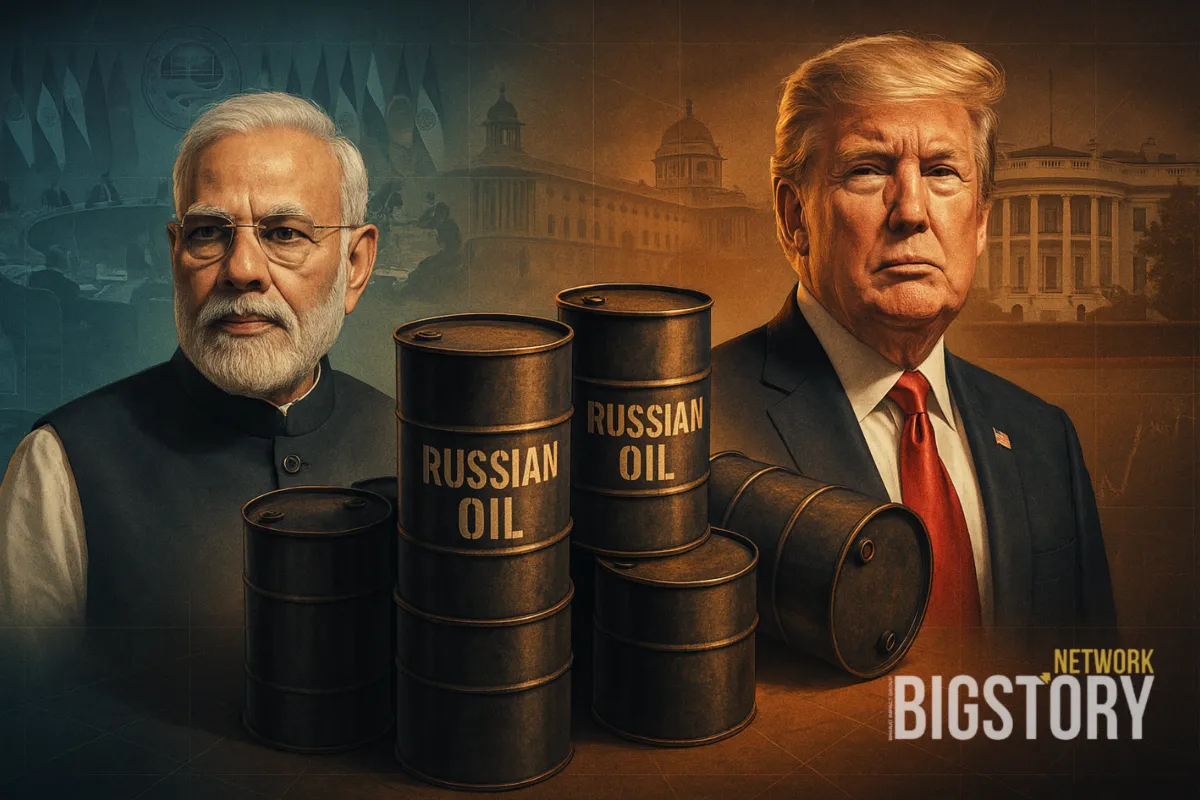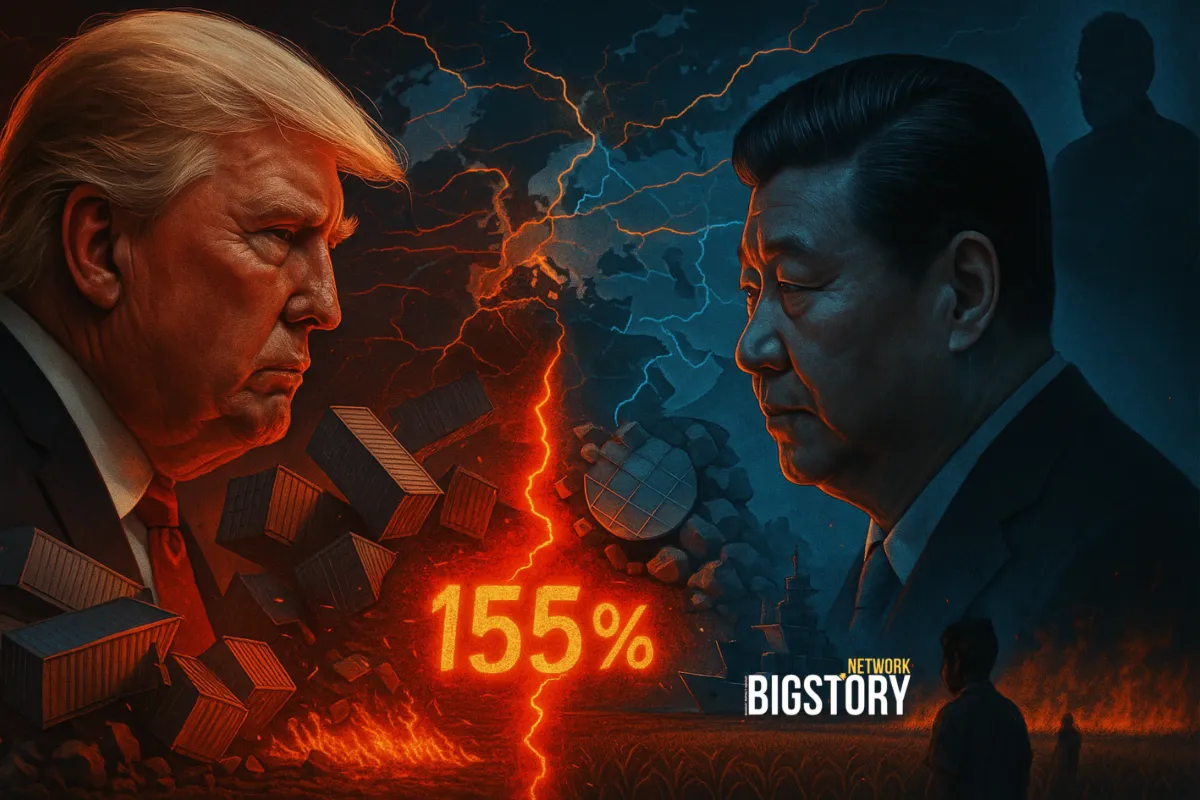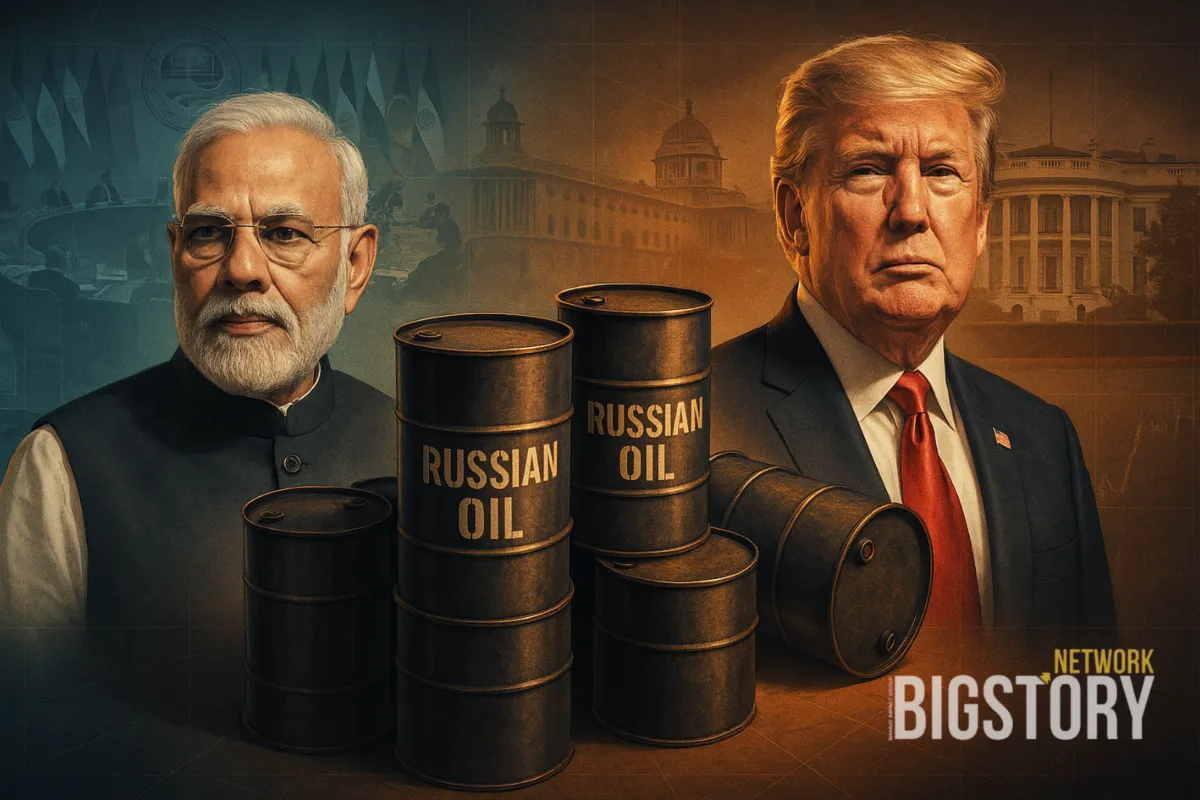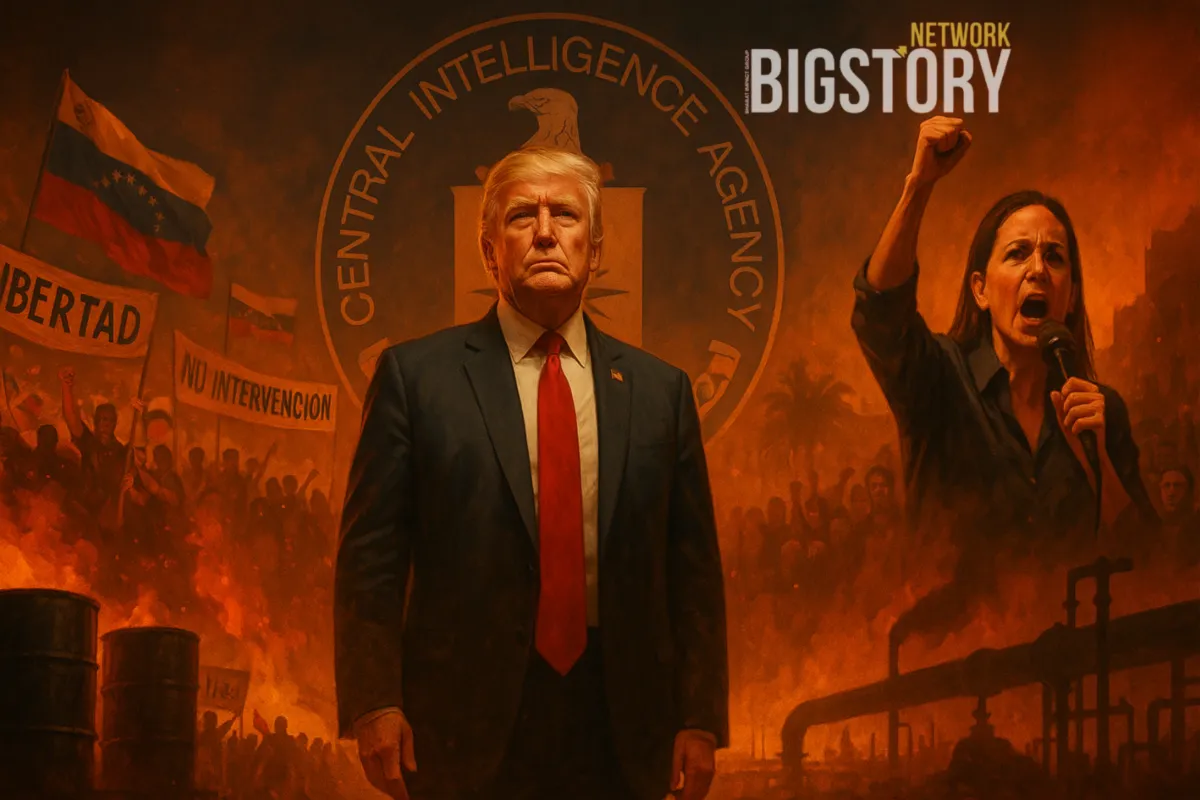On October 15, 2025, President Donald Trump walked into the Oval Office and detonated a diplomatic grenade. Flanked by reporters, he declared that Indian Prime Minister Narendra Modi had “assured” him India would stop buying Russian oil.
“I was not happy that India was buying oil, and he assured me today that they will not be buying oil from Russia,” Trump said. “This is a big step.”
Within an hour, global oil markets jumped by nearly 1%. Traders scrambled to price in the sudden idea of the world’s third-largest oil consumer cutting off its largest supplier. New Delhi’s reaction was more delicate: it emphasized “energy security” and “consumer interests” — but notably didn’t confirm Trump’s claim.
It was a classic Trump maneuver: take a diplomatic nuance and present it as a done deal. Behind that statement lies a far more complicated story involving tariffs, oil giants, strategic autonomy — and the limits of American power.
The Friendship Tested
Trump and Modi’s relationship has always blended political theater with personal warmth. Their joint rallies in Houston and Ahmedabad were choreographed spectacles — two nationalist leaders reinforcing each other’s image.
But by mid-2025, their relationship had curdled. Trump’s 50% tariffs on Indian goods — including a 25% levy targeting Russian oil purchases — pushed ties to their lowest point in decades. Modi’s public embrace of Putin and Xi at a China summit only deepened the rift.
After weeks of silence, Trump broke the ice with a birthday call on September 16. Soon, trade negotiations resumed. Less than a month later came Trump’s public claim about Russian oil — a tactical strike wrapped in personal diplomacy.
The Economic Engine Behind the Claim
Before Russia invaded Ukraine in 2022, India bought almost no Russian oil. But when Western sanctions pushed Moscow to offer deep discounts, Indian refiners seized the moment.
By May 2023, Russia had become India’s largest oil supplier, accounting for roughly 40% of total imports. India saved more than $33 billion between 2022 and 2024 thanks to those discounted barrels. The purchases totaled $132 billion — about one-fifth of Russia’s total export earnings.
When Trump imposed tariffs in mid-2025, state-owned refiners cut Russian imports by nearly half. But private companies — led by Mukesh Ambani’s Reliance Industries — doubled down. Reliance alone imported 850,000 barrels a day by September 2025.
The paradox was stark: U.S. sanctions targeted Russian oil, but American buyers ended up importing refined fuels processed from Russian crude in India. The system Trump was trying to strangle had quietly adapted to make him its customer.
The Billionaires and the Bureaucrats
Mukesh Ambani, India’s richest man, built an empire on refining. His Jamnagar refinery — the largest in the world — became a pressure valve for Russia’s war economy. It was Ambani’s refineries, not state companies, that kept Russian oil flowing to global markets through the back door.
Across the table, External Affairs Minister S. Jaishankar and Finance Minister Nirmala Sitharaman pushed back hard against Trump’s pressure. They framed energy as sovereignty, not leverage. “We will buy oil from wherever it serves Indian consumers,” Sitharaman declared.
Their position wasn’t just defiance — it was doctrine.
The Ghost of Non-Alignment
India’s non-aligned worldview was forged in the Cold War and has never disappeared. From Nehru to Modi, the principle has remained the same: India won’t pick sides if it hurts its national interest.
That doctrine explains why India kept buying oil from Venezuela when Washington demanded it stop, and why it’s doing the same with Russia today. In Indian foreign policy, non-alignment isn’t nostalgia. It’s muscle memory.
What Modi Likely Promised
So did Modi actually agree to Trump’s terms? Unlikely — at least not in the black-and-white way Trump described it.
India is diversifying its oil supply. State refiners are already shifting toward the U.S., Saudi Arabia, and West Africa. A gradual reduction, not a sudden halt, is the likelier outcome. Commerce Secretary Howard Lutnick’s own statement hinted at it: India would “rebalance imports” over time.
Trump took a cautious diplomatic signal and spun it into a headline-grabbing victory.
The Real Power Play: Russia, China, and U.S. Leverage
This isn’t really about oil. It’s about whether the United States can still shape global decisions in a multipolar world.
Russia’s energy lifeline now depends on India and China, which buy 70% of its seaborne crude. Trump can pressure India. He can’t do the same with Beijing. That asymmetry makes Washington’s demands look less like principle and more like selective coercion.
For Modi, this is leverage. For Trump, it’s a gamble — betting that personal rapport can overcome hard economic logic.
What Happens Next
Indian refiners will likely cut some Russian imports — enough to ease political pressure, not enough to crash the discounts. Trump will claim a win. Modi will keep his options open. Ambani will keep making money.
But the deeper story isn’t about a single barrel of oil. It’s about a world where Washington can no longer dictate energy politics unilaterally.
Trump’s Oval Office boast might sound like dominance. It’s actually a sign of how much the ground beneath that dominance has shifted.
The Bigger Question
If personal diplomacy between Trump and Modi can’t override structural national interests, what happens to America’s ability to lead in an increasingly fragmented world?
The world where the U.S. could simply tell countries whom to trade with is gone. What’s emerging is messier — a world of overlapping interests, strategic hedging, and multipolar bargaining.
That’s the story hiding beneath one Oval Office soundbite.
FAQs
Q1. What exactly did Trump say about India and Russian oil?
On October 15, 2025, President Donald Trump claimed Prime Minister Narendra Modi assured him that India would “not be buying oil from Russia” anymore. Trump described it as a “big step” in his strategy to cut off Russian energy revenues.
Q2. Has India officially agreed to stop buying Russian oil?
No. The Indian government has not confirmed Trump’s claim. In its official statement, the Ministry of External Affairs emphasized energy security and consumer interests, without mentioning any promise to halt Russian oil imports.
Q3. How important is Russian oil to India?
Russia is India’s largest oil supplier, providing nearly 40% of its crude imports. India began importing discounted Russian oil after Western sanctions in 2022, saving billions of dollars in energy costs.
Q4. Why does the U.S. want India to stop buying Russian oil?
The U.S. wants to reduce Russia’s oil revenues, which help finance the war in Ukraine. Since India and China are the biggest buyers of Russian crude, U.S. pressure on New Delhi is part of a broader sanctions strategy.
Q5. Can India afford to stop buying Russian oil completely?
A sudden halt would be difficult. India imports 85% of its crude needs, and Russian oil has been cheaper than global market prices. While India is diversifying suppliers, completely cutting off Russian oil would raise costs and strain its economy.







Leave a Reply